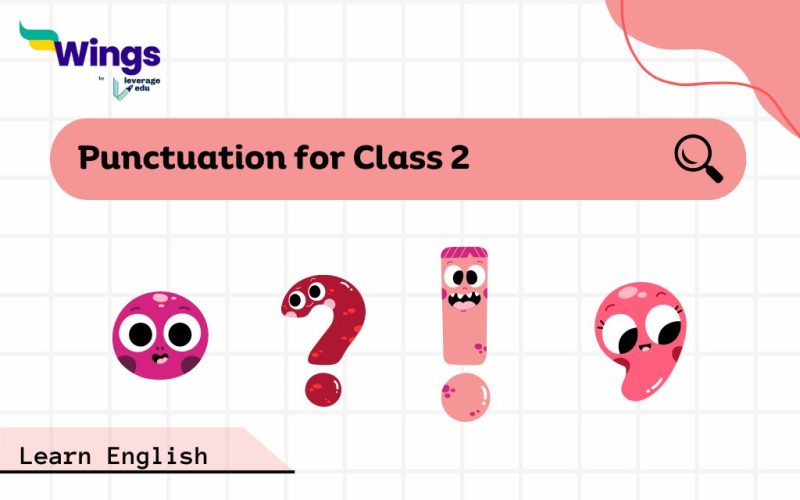Punctuation for Class 2: We can often tell if someone is happy, sad or excited when talking to them. But how do we get to know these expressions in one’s writing? How does one understand the expression of a character or that of the writer? This is where the role of punctuation marks comes into the picture. These play a very important role in our English grammar, without which a sentence is incomplete. Commonly used punctuation marks such as commas, full stops, and apostrophes are very important to be included in a sentence. To help you understand more about the punctuation for grade 2 students, keep on reading this blog.
This Blog Includes:
What is Punctuation for Class 2?
Punctuation marks are like the building blocks which complete the sentence. It makes it easier for the reader to understand the sentence. Students at a very young age are introduced to punctuation which helps them in constructing meaningful sentences. Here are some of the punctuation marks which are commonly taught to Class 2 students:
- Period or Full stop (.) which is used at the end of a sentence that tells something.
- Question mark (?) that appears at the end of a sentence that asks a question.
- Exclamation mark (!) is used at the end of a sentence that shows a strong feeling, like surprise or happiness.
- Comma (,) is used to separate things in a sentence.
- Apostrophe (‘) is used to make contractions such as – they’re (they are), can’t (can not), etc. They are also used to show possession.
Types of Punctuation for Class 2
| Punctuation Mark | Usage | Examples |
| Full Stop (.) | The full stop, also known as a period in American English is used at the end of the sentence indicating that the sentence has finished. | The sun is shining today. Go wash your hands. Wow! That cake looks delicious. |
| Question mark (?) | It appears at the end of a sentence that directly asks for information or seeks confirmation. | What time is it? This is a delicious cake, isn’t it? Can you hear me now? |
| Exclamation mark (!) | Exclamation marks add punch to sentences that show emotions like joy, anger, surprise, fear, or frustration. | We’re going to the beach! Woohoo! Don’t touch that! Look out! There’s a car coming! |
| Comma (,) | A comma can connect two independent clauses. | I bought apples, oranges, and bananas at the store. My brother, who is a doctor, just moved to a new city. My neighbour, Mr. Johnson, is a retired firefighter. |
| Apostrophe (‘) | An apostrophe is used to show where letters have been omitted to form a contraction. | The boy’s bike. The students’ laptops I can’t |
Also Read: 21+ Apostrophe Examples in Sentences as Punctuation Mark
Punctuation for Class 2 – Worksheet
Time to test yourself! Below is an exercise which we have compiled for you to test your knowledge. In the worksheet given below, write the correct sentence with all the necessary punctuation marks.
Worksheet 1 – Rewrite the following Sentences with Punctuation
Worksheet 2 – Identify and Correct the Punctuation
Related Reads on Punctuation
FAQs
A punctuation is a set of symbols which are part of the English language to emphasise the meaning of a sentence.
To introduce punctuation topics to a Class 2 student, one can provide them with several worksheets which will help them to warm up their basics, and make them read books.
This symbol is called a hyphen dash.
We hope this blog has provided you with all the necessary information on punctuation for class 2. To advance your grammar knowledge and read more informative blogs, check out our Learn English page and don’t forget to follow Leverage Edu.
 One app for all your study abroad needs
One app for all your study abroad needs














 45,000+ students realised their study abroad dream with us. Take the first step today.
45,000+ students realised their study abroad dream with us. Take the first step today.
